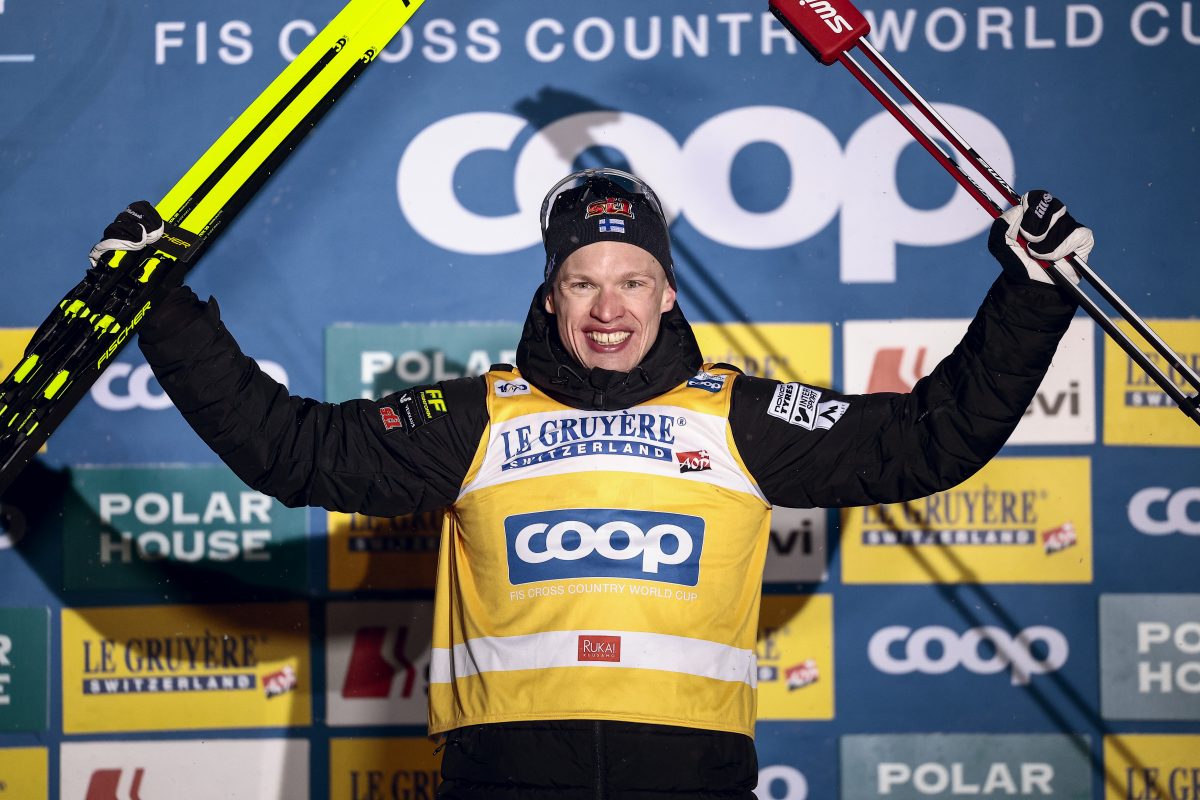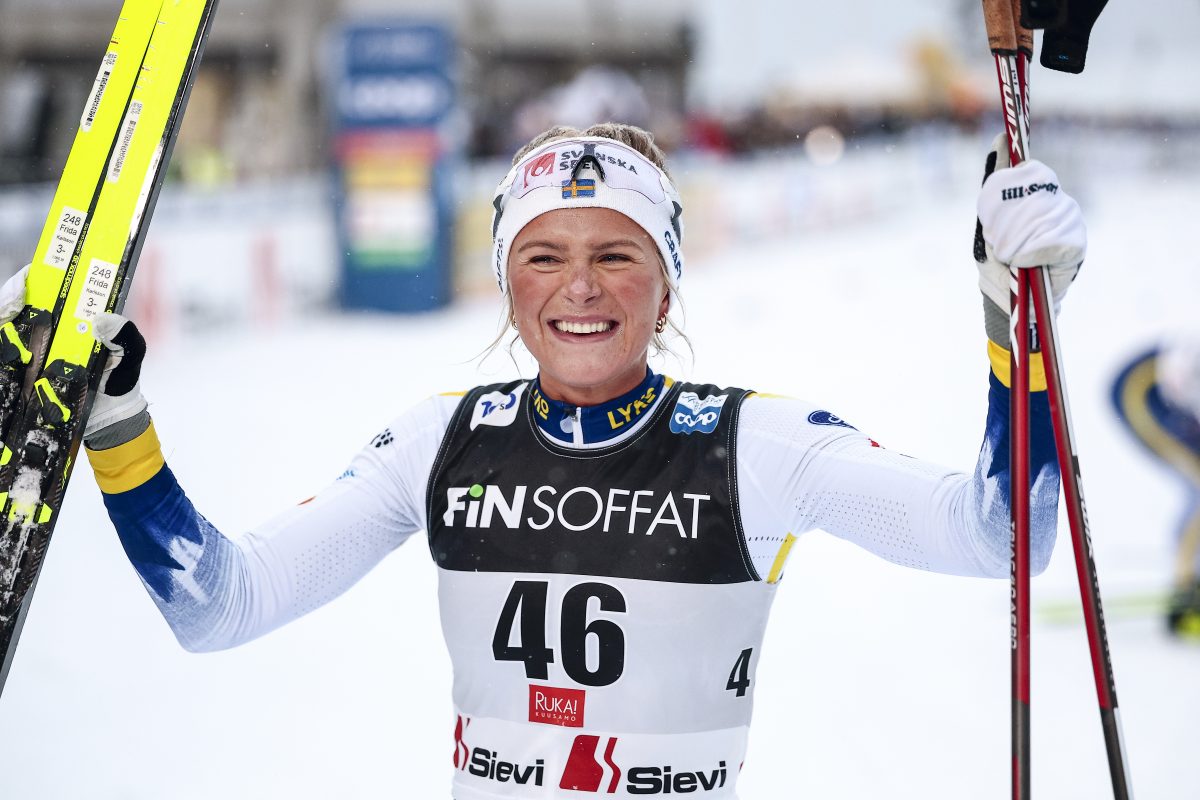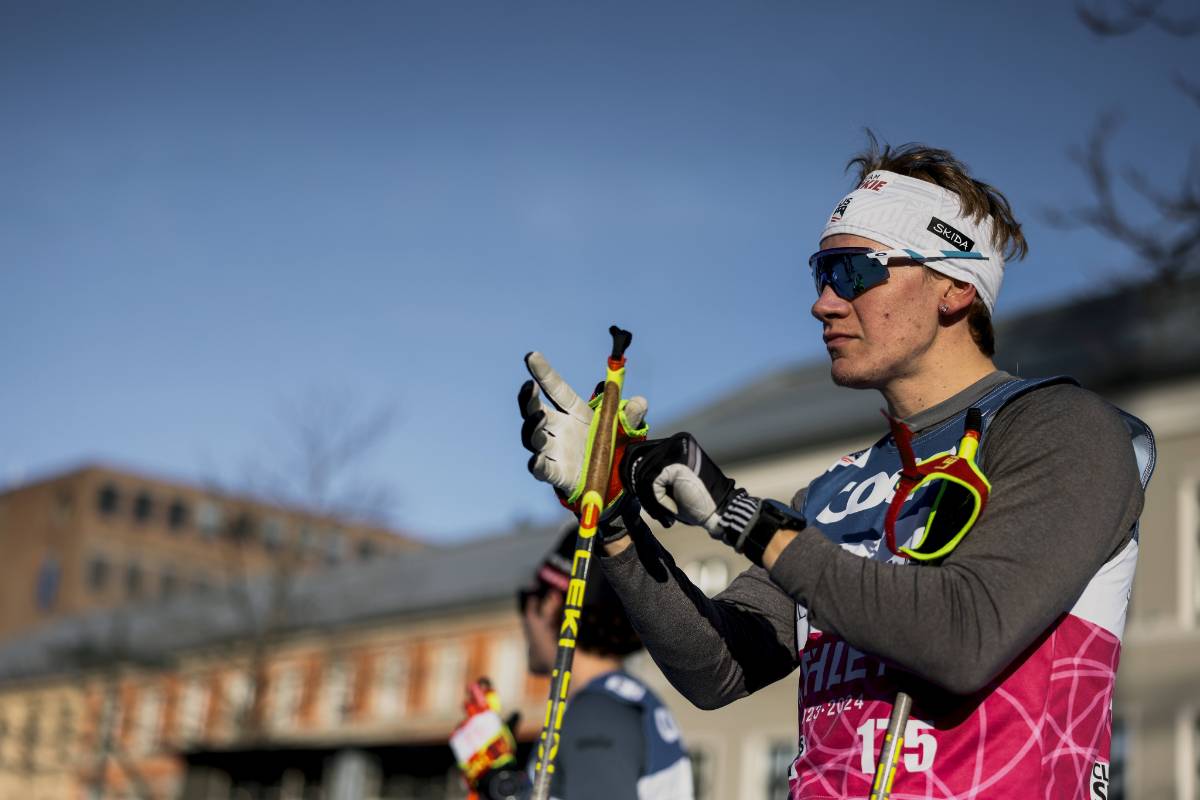This is my first-hand account of sprint-racing against some of the fastest skiers in the world. The race I describe herein was the final Swedish Cup (similar to our Nor/Am SuperTour) sprint of the season, held in Ostersund, Sweden — on the home trails of Anders Soedergren and the Fredriksson brothers. After World Cup sprints, Norwegian Nationals, and Swedish Nationals, this field is likely the most competitive in the world.
I started my day with preparations like any other sprint race: water, food, and packing a day’s worth of clothes into my duffel. I have cut the caffeine out of the morning ritual because I have found that I get far too excited far too early. I did not want to burn off all of my adrenaline during the car ride to the venue.
We arrived at the Ostersund Ski Club long in advance of the senior men’s qualifier. Prior to the main-event, the OSC held qualifiers that showcased much of Sweden’s young talent. Fields of J1 men and women, followed by OJ men and women, took to the 1,200-meter loop with reckless abandon. I went for a short jog and focused my thoughts. I knew within about 90 minutes the qualifier would be over; I knew today would be fun.
My legs felt good during warm-up, which is an important barometer for my sprint races. When my legs feel good, I do well. I skied around some of the upper trails, away from the loud Swedish commentary. I saw Hoegberg, Frederik Bystroem, Joergen Brink, and Thobias Fredriksson. Most of them stared at me, wondering who I was and why I had a US Ski Team emblem on my hat. They aren’t intimidating. I stared back. My nerves were starting up a bit, but only because I was anxious to see how many big-name Swedes I could beat in the qualifier.
All year long, I have skied very well in the qualifiers. I have a third, a second, and a first in Nor/Am competitions. But my stamina has been slightly more hit-or-miss. I think much of that is related to the fact that I do not have a set routine for the first 20 minutes after a qualifier. During those first minutes, it is imperative to maintain a high heart rate and clear the lactate. Sometimes I would ski, sometimes run, sometimes a little of both. My advice to anyone that wants to sprint fast: develop a protocol for your warm-up (obviously) and cool-down.
My goal for this day in Sweden was to qualify as fast as possible, and then see where things would go from there. In a JO race, or even a Nor/Am, leaving everything you have out on the course during the prelim is not always a desired tactic. But I wasn’t worried about the B-finals or anything like that. I simply wanted to turn some heads.
As I was walking towards the stadium, I watched the World Sprint Champion, Thobias Fredriksson, make his way onto the course. He didn’t look untouchable. He was powerful and fairly smooth, but not jaw-dropping fast.
The race organizers, for whatever reason, seeded my teammates and I in the back of the pack. I was pissed because I have pretty good FIS sprint points, and I wanted to be on the trail with the fast guys. Instead, I started with some no-names.
The course was tough, but the fast conditions were a saving grace. Out the stadium and up a long climb, then down a short hill, and back up a medium length climb. They threw a nice 180-degree turn at about the half-way point, followed by a down-up-down into the stadium. I knew the fast guys would V2 everything, which was fine with me. V2 up a medium-grade is about as close to my specialty as the Big Mac is to McDonald’s.
Racing in another country is not much different than racing here, only I couldn’t understand what the announcers or starting officials were saying. The timing clock, to my dismay, wasn’t equipped with the nice red/green light that signals your 3-second window for starting. So I waited until it was all the way on the :00.
Out of the start-gate, I was trying simply to stay on my skis. Parts of the stadium were sheer ice. About two strides into the race and both of my poles slid backwards. I adapted my technique a bit, and got moving. By the end of the first climb I had closed half of the 15-second gap on the guy in front of me. By the end of the second climb, I was ahead of him. I was careful around the icy-180, and then powered my way home. Again, the final stretch was more like ice-skating than skiing, so I was off-balance and probably lost a second or two. So it goes. I stretched across the line and nearly took out the photo-finish apparatus. Instead I took myself out, landed hard on my back, and jammed my thumb.
I looked back to see my teammate, and fellow sprinter, Steve Scott, cross the line not long after me. It seemed we both did well, but I couldn’t decipher what the announcer said. Something like “tretton†and “femtonâ€. We found out from our coach that Steve was in 15th and I was in 13th. I was happy, but I really wanted to be top-8. Fredriksson was in 11th, about 1.3 seconds ahead of me.
Results: (qualification place, name, qualification time, final place, notes)
1. Fredrik Byström 2.35,2 4 (3rd place sprint, U23’s 2003)
2. Peter Edén 2.36,7 2 (11th place in World Cup sprint, Feb 2004)
3. Jörgen Brink 2.37,3 9 (3 times top-5 World Cup sprints, Red Group)
4. Henrik Rapp 2.37,8 8
5. Rikard Grip 2.37,9 3 (33rd place in World Cup sprint, Feb 2004)
6. Anders Högberg 2.38,1 5 (2 podiums in World Cup sprints, Red Group)
7. Olof Hedberg 2.38,4 10
8. Andreas Domeij 2.38,9 6 (2 times top-30 in World Cup sprints)
9. Erik Berglund 2.39,3 13
10. Petter Myhlback 2.40,4 7 (2 times top-30 in World Cup sprints)
11. Thobias Fredriksson 2.40,6 1 (4 podiums in World Cup sprints, World Champ)
12. Paul Murray 2.40,7 11
13. Tim Weston USA 2.41,89 14 (1 Nor/Am sprint victory)
14. Daniel Tynell 2.41,96 15
15. Steve Scott USA 2.42,2 16
16. Eric Laestadius 2.43,7 12
So Steve and I both continued our day at the office. I ran for a cool-down, Steve skied. I was pretty calm and I enjoyed watching all of the junior-heats from the front seat of our van. The parking lot afforded a view of the entire course, which was nice for me. As time went on, I again began my warm-up. This one was less intense than during the morning. The hay is in the barn, I thought.
I wasn’t aware of it at the time, but I had Rapp, Grip, and Murray in my heat. They just looked like some regular guys to me. All I knew was that Fredriksson wasn’t in my heat. We started the heat in a slightly different fashion than here in America. The starter announces, “30 seconds to start,†which is when the 4 athletes toe the line. Then it is a long wait before the actual start. Though 30 seconds is a bit long, their method seems to make the beginning a little more fair. Nobody jumps the gun because everyone waits so long for it to sound.
 timweston1@yahoo.com
timweston1@yahoo.com



